EDMONTON — The semifinal matchups are set at the U18 men’s Hlinka Gretzky Cup with Canada facing the U.S. in one game on Friday and Sweden battling upstart Czechia in the other.
This annual summer tournament always provides scouts with some eye-opening individual performances. Some prospects take their games to a new level offensively while others display the kind of grit and determination that contributes to team results. And of course, it’s impossible to win championships without elite level goaltending and I’ve witnessed exactly that in the round robin.
At this time of year, I like to remind our readers about what scouts are looking for in prospects. When I was the scouting director in Florida, we started with the following baseline requirements:
— Does the prospect play with consistent / relentless compete?
— Will he be able to skate at NHL pace?
— Does the player think the game responsibly, on and off the puck?
After meeting the baseline criteria(s), the player’s skill attributes in relation to his peer group and future NHL competition is analyzed as such:
— Does the prospect have top-line NHL scoring upside?
— Is he used in a variety of roles (i.e. special teams)?
— Is he physical?
— Does the player take key faceoffs?
— Does he block shots?
— Etc …
Scouting goalies is a difficult proposition. Many teams are hesitant to project a goalie who is undersized by NHL standards. Today’s NHL creases are mostly populated by towering athletes who measure above six-foot-three in height. There are some anomalies, like Juuse Sarros in Nashville who stands only five-foot-11, but the smaller goalies have to be exceptionally quick and even more athletic than their bigger counterparts.
Some of the things scouts are looking for in goalies include:
— Focus / starting games on time / regrouping after a poor goal against
— Athleticism
— Secondary battle
— Tracking
— Lateral push / quickness
— Size in the net
— Puck play
This week in Edmonton, I thought of what Wayne Gretzky once said before the Oilers' dynasty took hold in the 1980s, and how it applies to scouting prospects. Following Edmonton’s loss in the Stanley Cup Final to the New York Islanders in 1983, Gretzky said:
“We walked by their locker room in the corridor and saw after they won, they were too beat up to really enjoy it and savour the victory at that moment. We were able to walk out of their pretty much scot-free. … you have to take it to another level in order to win a Stanley Cup.”
Here are some of my notes from the Hlinka Gretzky Cup following the conclusion of the round-robin.
Two players who have stood out for me with their size, strength, leadership and overall impact are:
Eddie Genborg (Team Sweden)
Left-shot forward
Size: six-foot-two, 186 pounds
Genborg has given opponents all they can handle with his physicality and overall compete this week. He doesn’t move the needle offensively like other more noticeable point-producing forwards, but he extends plays in the trenches and finishes his checks every chance he gets.
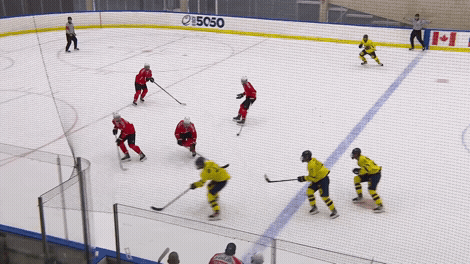
Blake Fiddler (Team USA)
Right-shot defenceman
Size: six-foot-four, 207 pounds
Fiddler is the son of former NHL forward Vern Fiddler. He’s a big, strong, right-shot defenceman who leans two-way, match-up “D.” He’s captain of Team USA this week at the tournament and leading by example. Fiddler has logged a ton of ice time in all situations and pitched in with some offence in addition to his responsibilities defending his net. Fiddler scored a goal in transition against Germany when he took a puck end-to-end for a tuck via a strong move on the offensive blue line and net drive. I don’t expect Fiddler to produce a ton of offence this year with the Oil Kings of the WHL, but it’s nice to see him have the confidence to attack with the puck on his stick and show he has the pace to be a threat on occasion.
Complete players are prospects who can be used in all situations, play with detail on and off the puck, and display pace and high-end compete.
Canada captain Matt Schaefer has rolled over the boards at even strength and the penalty-kill, matching up against top lines. He’s also contributed two goals and three assists offensively. Schaefer is a fantastic skater who’s quick out of the gate and has the legs to escape pressure and lead the rush offensively without sacrificing his positioning defensively. In my pre-tournament players to watch article earlier in the week, I wrote that I felt Schaefer was ready to breakout offensively this season playing for Erie in the OHL. The six-foot-one, 175-pound defenceman has been the best D-man in the tournament so far — arguably the top player overall.
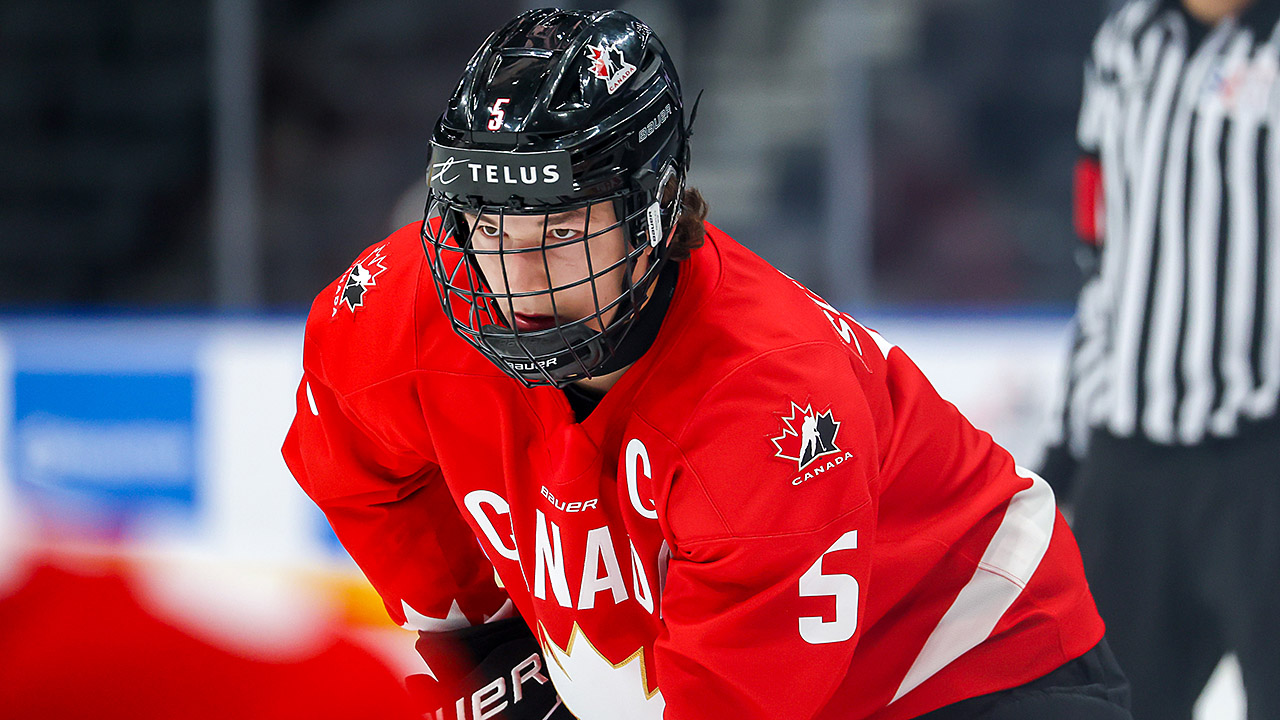
The NHL has room for undersized skill forwards, but they must play fast and provide the relentless compete required to allow their skillset to flourish.
Adam Benak (Team Czechia)
Left-shot forward
Size: five-foot-seven, 157 pounds
Benak was impressive on the international stage playing as an underage U18 prospect last season, but he only weighed 145 pounds as of February. Benak hasn’t grown taller yet, but he’s added more strength and leg power, and the results speak for themselves. He has more leverage in traffic and even more explosiveness in open ice. Benak has produced three goals and five assists in his first three tournament games. He leads his group in scoring and plays on the top line and first power-play unit.
Canada’s goalies Jack Ivankovic (Brampton, OHL) and Lucas Beckman (Baie-Comeau, QMJHL) hadn’t been seriously tested until Ivankovic had a terrific game against Sweden in the final round-robin contest for the Canadians.
Ivankovic is similar in stature to Saros and he plays a similar style. Ivankovic is listed at five-foot-11 and 178 pounds and is an athletic butterfly goalie. His low-net coverage has been on point. He has displayed quick pads and the ability to regroup and come up with reaction stops off rebounds. He came up with several key saves in the Sweden game to allow Canada to keep a 1-0 lead and eventually pull out a 2-1 win.
Here are two sequences from earlier in the week that illustrate what I’m describing with Ivankovic’s low-net coverage and timely saves:
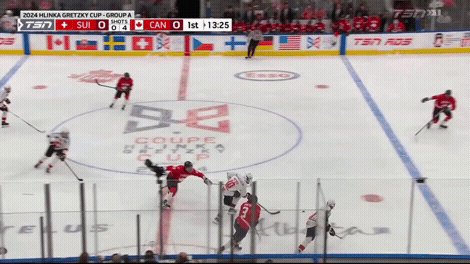
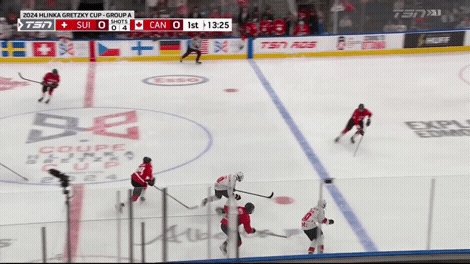
— Canada forward Luca Romano (Kitchener, OHL) is a player who continues to leave a positive impression. The five-foot-11, 173-pound, right-shot forward plays the game the right way. He’s been a threat off the rush at times, generally above the play when his group doesn’t have clean possession in the offensive zone, and produced two goals and two assists in Canada’s first three games. Romano can be trusted in a variety of roles and slot into any line on the roster effectively.
— Finland has had a tough week. The group has struggled to create offence and they’ve been on their heels for most of their games. The Finns failed to win a round-robin game but defenceman Lasse Boelius has had some positive moments. Boelius is a six-foot, 181-pound, two-way defender who has made plays with the puck that have died on the sticks of his teammates. His effort and execution have mostly been reliable. He has my attention moving forward and will be playing in Finland’s top pro level Liiga for Assat this season.




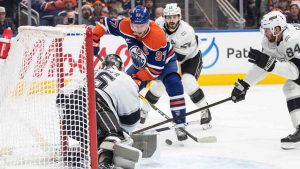
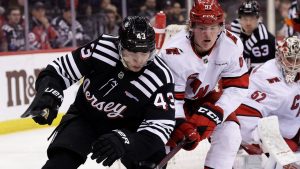

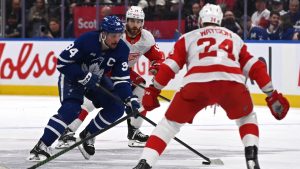
COMMENTS
When submitting content, please abide by our submission guidelines, and avoid posting profanity, personal attacks or harassment. Should you violate our submissions guidelines, we reserve the right to remove your comments and block your account. Sportsnet reserves the right to close a story’s comment section at any time.